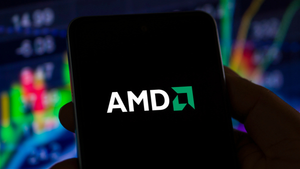
October 2025 has witnessed an unprecedented market rally in semiconductor stocks and the broader technology sector, fundamentally reshaped by the escalating demands of Artificial Intelligence (AI). This "AI Supercycle" has propelled major U.S. indices, including the S&P 500, Nasdaq Composite, and Dow Jones Industrial Average, to new all-time highs, reflecting an electrifying wave of investor optimism and a profound restructuring of the global tech landscape. The immediate significance of this rally is multifaceted, reinforcing the technology sector's leadership, signaling sustained investment in AI, and underscoring the market's conviction in AI's transformative power, even amidst geopolitical complexities.
The robust performance is largely attributed to the "AI gold rush," with unprecedented growth and investment in the AI sector driving enormous demand for high-performance Graphics Processing Units (GPUs) and Central Processing Units (CPUs). Anticipated and reported strong earnings from sector leaders, coupled with positive analyst revisions, are fueling investor confidence. This rally is not merely a fleeting economic boom but a structural shift with trillion-dollar implications, positioning AI as the core component of future economic growth across nearly every sector.
The AI Supercycle: Technical Underpinnings of the Rally
The semiconductor market's unprecedented rally in October 2025 is fundamentally driven by the escalating demands of AI, particularly generative AI and large language models (LLMs). This "AI Supercycle" signifies a profound technological and economic transformation, positioning semiconductors as the "lifeblood of a global AI economy." The global semiconductor market is projected to reach approximately $697-701 billion in 2025, an 11-18% increase over 2024, with the AI chip market alone expected to exceed $150 billion.
This surge is fueled by massive capital investments, with an estimated $185 billion projected for 2025 to expand global manufacturing capacity. Industry giants like Taiwan Semiconductor Manufacturing Company (TSMC) (TWSE: 2330) (NYSE: TSM), a primary beneficiary and bellwether of this trend, reported a record 39% jump in its third-quarter profit for 2025, with its high-performance computing (HPC) division, which fabricates AI and advanced data center silicon, contributing over 55% of its total revenues. The AI revolution is fundamentally reshaping chip architectures, moving beyond general-purpose computing to highly specialized designs optimized for AI workloads.
The evolution of AI accelerators has seen a significant shift from CPUs to massively parallel GPUs, and now to dedicated AI accelerators like Application-Specific Integrated Circuits (ASICs) and Neural Processing Units (NPUs). Companies like Nvidia (NASDAQ: NVDA) continue to innovate with architectures such as the H100 and the newer H200 Tensor Core GPU, which achieves a 4.2x speedup on LLM inference tasks. Nvidia's upcoming Blackwell architecture boasts 208 billion transistors, supporting AI training and real-time inference for models scaling up to 10 trillion parameters. Google's (NASDAQ: GOOGL) Tensor Processing Units (TPUs) are prominent ASIC examples, with the TPU v5p showing a 30% improvement in throughput and 25% lower energy consumption than its previous generation in 2025. NPUs are crucial for edge computing in devices like smartphones and IoT.
Enabling technologies such as advanced process nodes (TSMC's 7nm, 5nm, 3nm, and emerging 2nm and 1.4nm), High-Bandwidth Memory (HBM), and advanced packaging techniques (e.g., TSMC's CoWoS) are critical. The recently finalized HBM4 standard offers significant advancements over HBM3, targeting 2 TB/s of bandwidth per memory stack. AI itself is revolutionizing chip design through AI-powered Electronic Design Automation (EDA) tools, dramatically reducing design optimization cycles. The shift is towards specialization, hardware-software co-design, prioritizing memory bandwidth, and emphasizing energy efficiency—a "Green Chip Supercycle." Initial reactions from the AI research community and industry experts are overwhelmingly positive, acknowledging these advancements as indispensable for sustainable AI growth, while also highlighting concerns around energy consumption and supply chain stability.
Corporate Fortunes: Winners and Challengers in the AI Gold Rush
The AI-driven semiconductor and tech market rally in October 2025 is profoundly reshaping the competitive landscape, creating clear beneficiaries, intensifying strategic battles among major players, and disrupting existing product and service offerings. The primary beneficiaries are companies at the forefront of AI and semiconductor innovation.
Nvidia (NASDAQ: NVDA) remains the undisputed market leader in AI GPUs, holding approximately 80-85% of the AI chip market. Its H100 and next-generation Blackwell architectures are crucial for training large language models (LLMs), ensuring sustained high demand. Taiwan Semiconductor Manufacturing Company (TSMC) (TWSE: 2330) (NYSE: TSM) is a crucial foundry, manufacturing the advanced chips that power virtually all AI applications, reporting record profits in October 2025. Advanced Micro Devices (AMD) (NASDAQ: AMD) is emerging as a strong challenger, with its Instinct MI300X and upcoming MI350 accelerators, securing significant multi-year agreements, including a deal with OpenAI. Broadcom (NASDAQ: AVGO) is recognized as a strong second player after Nvidia in AI-related revenue and has also inked a custom chip deal with OpenAI. Other key beneficiaries include Micron Technology (NASDAQ: MU) for HBM, Intel (NASDAQ: INTC) for its domestic manufacturing investments, and semiconductor ecosystem players like Marvell Technology (NASDAQ: MRVL), Cadence (NASDAQ: CDNS), Synopsys (NASDAQ: SNPS), and ASML (NASDAQ: ASML).
Cloud hyperscalers like Microsoft (NASDAQ: MSFT), Amazon (NASDAQ: AMZN) (AWS), and Alphabet (NASDAQ: GOOGL) (Google) are considered the "backbone of today's AI boom," with unprecedented capital expenditure growth for data centers and AI infrastructure. These tech giants are leveraging their substantial cash flow to fund massive AI infrastructure projects and integrate AI deeply into their core services, actively developing their own AI chips and optimizing existing products for AI workloads.
Major AI labs, such as OpenAI, are making colossal investments in infrastructure, with OpenAI's valuation surging to $500 billion and committing trillions through 2030 for AI build-out plans. To secure crucial chips and diversify supply chains, AI labs are entering into strategic partnerships with multiple chip manufacturers, challenging the dominance of single suppliers. Startups focused on specialized AI applications, edge computing, and novel semiconductor architectures are attracting multibillion-dollar investments, though they face significant challenges due to high R&D costs and intense competition. Companies not deeply invested in AI or advanced semiconductor manufacturing risk becoming marginalized, as AI is enabling the development of next-generation applications and optimizing existing products across industries.
Beyond the Boom: Wider Implications and Market Concerns
The AI-driven semiconductor and tech market rally in October 2025 signifies a pivotal, yet contentious, period in the ongoing technological revolution. This rally, characterized by soaring valuations and unprecedented investment, underscores the growing integration of AI across industries, while also raising concerns about market sustainability and broader societal impacts.
The market rally is deeply embedded in several maturing and emerging AI trends, including the maturation of generative AI into practical enterprise applications, massive capital expenditure in advanced AI infrastructure, the convergence of AI with IoT for edge computing, and the rise of AI agents capable of autonomous decision-making. AI is widely regarded as a significant driver of productivity and economic growth, with projections indicating the global AI market could reach $1.3 trillion by 2025 and potentially $2.4 trillion by 2032. The semiconductor industry has cemented its role as the "indispensable backbone" of this revolution, with global chip sales projected to near $700 billion in 2025.
However, despite the bullish sentiment, the AI-driven market rally is accompanied by notable concerns. Major financial institutions and prominent figures have expressed strong concerns about an "AI bubble," fearing that tech valuations have risen sharply to levels where earnings may never catch up to expectations. Investment in information processing and software has reached levels last seen during the dot-com bubble of 2000. The dominance of a few mega-cap tech firms means that even a modest correction in AI-related stocks could have a systemic impact on the broader market. Other concerns include the unequal distribution of wealth, potential bottlenecks in power or data supply, and geopolitical tensions influencing supply chains. While comparisons to the Dot-Com Bubble are frequent, today's leading AI companies often have established business models, proven profitability, and healthier balance sheets, suggesting stronger fundamentals. Some analysts even argue that current AI-related investment, as a percentage of GDP, remains modest compared to previous technological revolutions, implying the "AI Gold Rush" may still be in its early stages.
The Road Ahead: Future Trajectories and Expert Outlooks
The AI-driven market rally, particularly in the semiconductor and broader technology sectors, is poised for significant near-term and long-term developments beyond October 2025. In the immediate future (late 2025 – 2026), AI is expected to remain the primary revenue driver, with continued rapid growth in demand for specialized AI chips, including GPUs, ASICs, and HBM. The generative AI chip market alone is projected to exceed $150 billion in 2025. A key trend is the accelerating development and monetization of AI models, with major hyperscalers rapidly optimizing their AI compute strategies and carving out distinct AI business models. Investment focus is also broadening to AI software, and the proliferation of "Agentic AI" – intelligent systems capable of autonomous decision-making – is gaining traction.
The long-term outlook (beyond 2026) for the AI-driven market is one of unprecedented growth and technological breakthroughs. The global AI chip market is projected to reach $194.9 billion by 2030, with some forecasts placing semiconductor sales approaching $1 trillion by 2027. The overall artificial intelligence market size is projected to reach $3,497.26 billion by 2033. AI model evolution will continue, with expectations for both powerful, large-scale models and more agile, smaller hybrid models. AI workloads are expected to expand beyond data centers to edge devices and consumer applications. PwC predicts that AI will fundamentally transform industry-level competitive landscapes, leading to significant productivity gains and new business models, potentially adding $14 trillion to the global economy by the decade's end.
Potential applications are diverse and will permeate nearly every sector, from hyper-personalization and agentic commerce to healthcare (accelerating disease detection, drug design), finance (fraud detection, algorithmic trading), manufacturing (predictive maintenance, digital triplets), and transportation (autonomous vehicles). Challenges that need to be addressed include the immense costs of R&D and fabrication, overcoming the physical limits of silicon, managing heat, memory bandwidth bottlenecks, and supply chain vulnerabilities due to concentrated manufacturing. Ethical AI and governance concerns, such as job disruption, data privacy, deepfakes, and bias, also remain critical hurdles. Expert predictions generally view the current AI-driven market as a "supercycle" rather than a bubble, driven by fundamental restructuring and strong underlying earnings, with many anticipating continued growth, though some warn of potential volatility and overvaluation.
A New Industrial Revolution: Wrapping Up the AI-Driven Rally
October 2025's market rally marks a pivotal and transformative period in AI history, signifying a profound shift from a nascent technology to a foundational economic driver. This is not merely an economic boom but a "structural shift with trillion-dollar implications" and a "new industrial revolution" where AI is increasingly the core component of future economic growth across nearly every sector. The unprecedented scale of capital infusion is actively driving the next generation of AI capabilities, accelerating innovation in hardware, software, and cloud infrastructure. AI has definitively transitioned from "hype to infrastructure," fundamentally reshaping industries from chips to cloud and consumer platforms.
The long-term impact of this AI-driven rally is projected to be widespread and enduring, characterized by a sustained "AI Supercycle" for at least the next five to ten years. AI is expected to become ubiquitous, permeating every facet of life, and will lead to enhanced productivity and economic growth, with projections of lifting U.S. productivity and GDP significantly in the coming decades. It will reshape competitive landscapes, favoring companies that effectively translate AI into measurable efficiencies. However, the immense energy and computational power requirements of AI mean that strategic deployment focusing on value rather than sheer volume will be crucial.
In the coming weeks and months, several key indicators and developments warrant close attention. Continued robust corporate earnings from companies deeply embedded in the AI ecosystem, along with new chip innovation and product announcements from leaders like Nvidia (NASDAQ: NVDA) and AMD (NASDAQ: AMD), will be critical. The pace of enterprise AI adoption and the realization of productivity gains through AI copilots and workflow tools will demonstrate the technology's tangible impact. Capital expenditure from hyperscalers like Microsoft (NASDAQ: MSFT), Amazon (NASDAQ: AMZN), and Alphabet (NASDAQ: GOOGL) will signal long-term confidence in AI demand, alongside the rise of "Sovereign AI" initiatives by nations. Market volatility and valuations will require careful monitoring, as will the development of regulatory and geopolitical frameworks for AI, which could significantly influence the industry's trajectory.
This content is intended for informational purposes only and represents analysis of current AI developments.
TokenRing AI delivers enterprise-grade solutions for multi-agent AI workflow orchestration, AI-powered development tools, and seamless remote collaboration platforms.
For more information, visit https://www.tokenring.ai/.







